News & Articles
Browse all content by date.
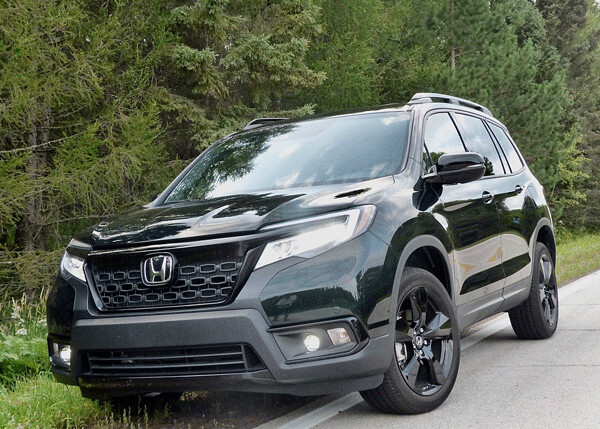

Back when Honda started making a new worldly wave of compact economy cars, Isuzu was another Japanese company that was making tough if unspectacular compacts and also strong, durable engines, including a diesel. Honda, anticipating it might challenge Toyota more effectively if it had a truck or two in its lineup, worked out an arrangement with Isuzu in the mid-1990s, to specifically build Honda an SUV.
Isuzu’s larger all-terrain vehicle called the Trooper was not something Honda was interested in; Honda had its eye on the midsize Isuzu Rodeo, which could handle the foliage growing over on the way to the cabin Up North, and otherwise take the family around town and to hockey rinks and baseball fields. Thus was the Honda Passport born. Neatly styled, and with an Isuzu engine that was tough, if not sophisticated.
It served its purpose, and after a decade, Honda discontinued it. But two years ago, the tone of U.S. customers had changed into the near-crazy emphasis on SUVs of all shapes, sizes and styles. Even though Honda was pretty well off with an array of SUVs ranging from the CR-V, up to the Pilot, and then the companion Acura RDX and MDX, added the economy HD-R, but still wanted one more niche-filler. So the engineers went to work and created a midsize SUV on the Pilot platform, capable of light off-road duty. A stylish, more-than-just-user-friendly vehicle emerged, built on a modified Pilot platform, and Honda decided to recycle the old name: Passport.
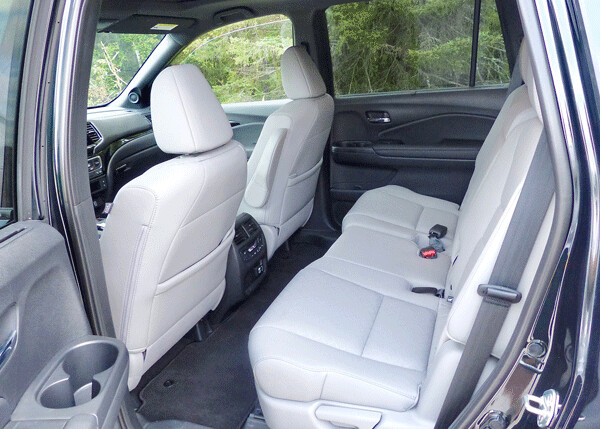
It hit the market in time for this year’s auto-show circuit, and it made a favorable impression, even if it seemed to be a niche vehicle for which there may not be a niche. The Pilot is one of the best larger, 3-row-seat family haulers on the market, and the CR-V is a runaway best seller as a compact. The Passport had to fit between those two, so it was given the potent 3.5-liter V6 out of the Pilot, which is a classy vehicle that nobody wants to take off road. The Passport was given 20-inch wheels — at least on the Elite test model — and a tad more ground clearance, and it has 280 horsepower and 262 foot-pounds of torque that is harnessed by a 9-speed automatic transmission with steering wheel paddle shifters.
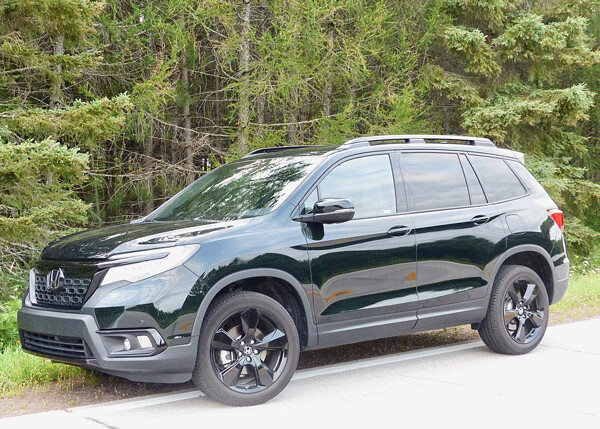
But let’s face it, the Passport has a sporty demeanor and an aggressive appearance, but there’s a good chance 90 percent of them are never going to go farther off-road than that driveway to the cabin that has a little grass growing in the center, between the two tire lanes. At $45,695, the Passport is priced right there with prime competitors such as the Ford Edge, the new Chevrolet Blazer, and numerous others, although the very competent and high-tech Hyundai Santa Fe is significantly less expensive.
With so many crossover SUVs on the market that it gets difficult to impossible for any of them to stand out, the Passport strikes a meaningful pose. The Passport Elite that I drove appeared to be black in subdued light, but when you got close to it, or the sun came up, you realized that it actually is a spectacular Black Forest metallic that will warm the hearts of any folks who wonder why there aren’t more green vehicles on the road. My family loves green, although my wife, Joan, avoids even looking at that new neon green that has become a popular shock shade. My older son, Jack, likes all greens, and favors the bright Kawasaki racing green that used to adorn their motorcycles. Younger son, Jeff, might lean toward the darker forest green of Bemidji State University’s athletic teams, perhaps because he graduated from there.
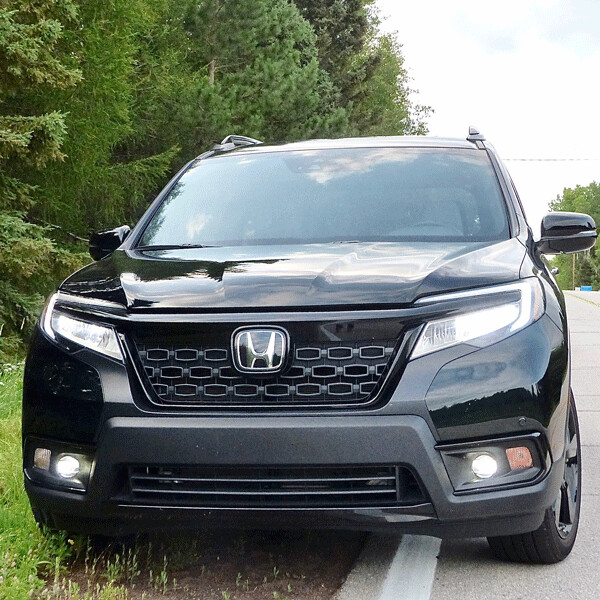
My preference is like Jeff’s, the darkest green possible. So while Joan and Jack thought the Passport was surprisingly stunning, I thought it was the perfect paint job from the first I laid eyes on it, and the metallic that made the green modulate in sunlight was just that mucn better. Besides, Jack likes the idea of blacking out all trim items, so the black alloy wheels were an added attraction on the Passport’s Black Forest paint.
The 3.5 V6 is quick, and the 9-speed transmission is efficient, and you can paddle it for quicker performance if you put the shift thingie into manual mode. It had good stability in cornering and it’s quiet running, with an attractive interior and creature-features.
There are countless features packed into the Passport, as Honda tries to market a more-aggressive SUV but knows even compact SUV buyers want luxury and high-tech features whether on or off the road. A hands-free tailgate can be activated by your foot while carrying parcels, and once open, there is an under-floor storage bin, and the foldable rear seats can expand storage greatly. The rear seats have window shades, and the front buckets are heated and ventilated, while the rear seat gets heated only.
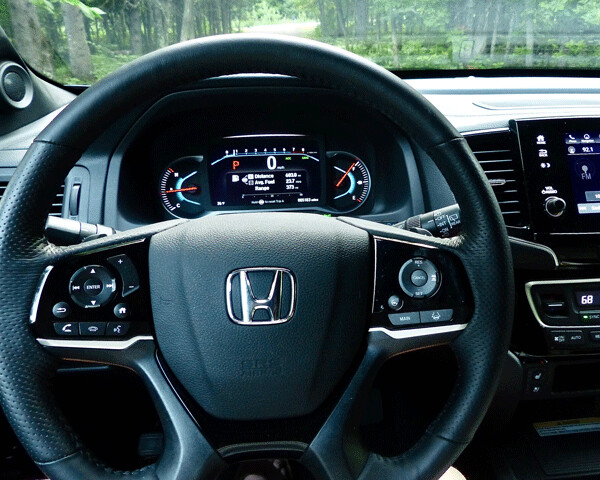
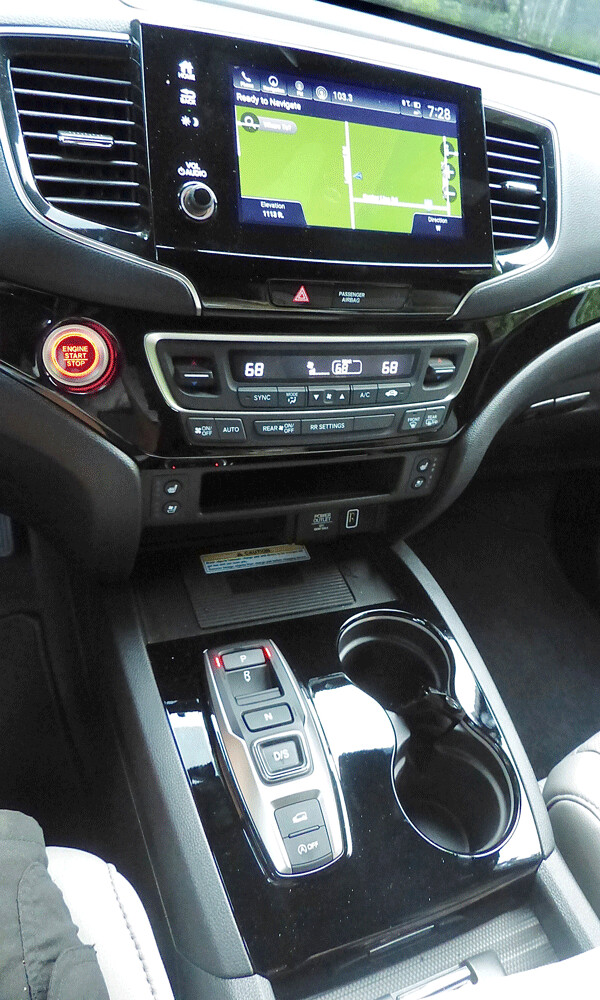
The grey leather interior also is a nice touch with the Black Forest exterior, and the 10-speaker premium audio and navigation screen offer all the connectivity features so important to contemporary buyers. Stability control, Honda’s ACE safety cage, lane detection, rear view camera with cross-traffic assist, a large sunroof, and push-button start with hill-start assist and mobile hot-spot are things you might not even imagine being available.
In Honda’s relentless pursuit of push-button controls, it has freed up space on the console by eliminating the gearshift lever. In its place is a little rectangle that provides a push button for getting shifted into drive, at the bottom, into neutral, in the middle, and into reverse up at the top. There first few times you drive it, however, you may search for a while before you find park, which is a separate button.
I have this concern that veteran drivers who are used to stopping, shifting up to the top of the panel to find park, will find the idle-stop feature has cut the engine, and so, thinking it’s in park, you might jump out and slam the door before you realize it was not shut off, just idle-stopped, and that you were not in park, but reverse. You will notice this as your Passport goes speeding away, backwards, over the hillside.
Maybe that’s ridiculous, but I started to get out to add fuel and I had one foot out before it started to back up, so, with great relief, I switched it into park and hit the push-button start-stop to engage stop.
Of course, there might be another advantage to crossing the border, with your LED headlights and foglight illuminating the road ahead, and when the TSA guys asks where your passport is, you can say “I’m driving it.” No, don’t do that. TSA workers may lack a sense of humor after a long day. They’ve seen everything, and even if they’re seeing their first Passport, it’s not their first Rodeo.
| Tweet |


